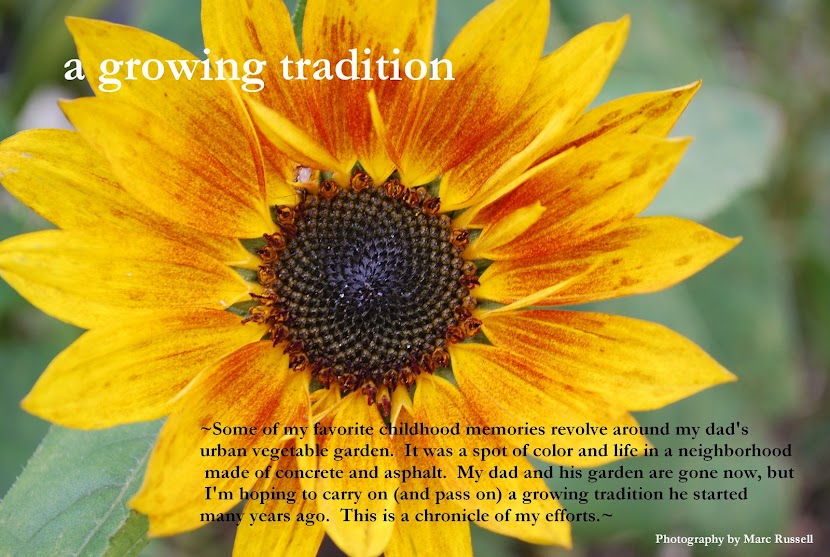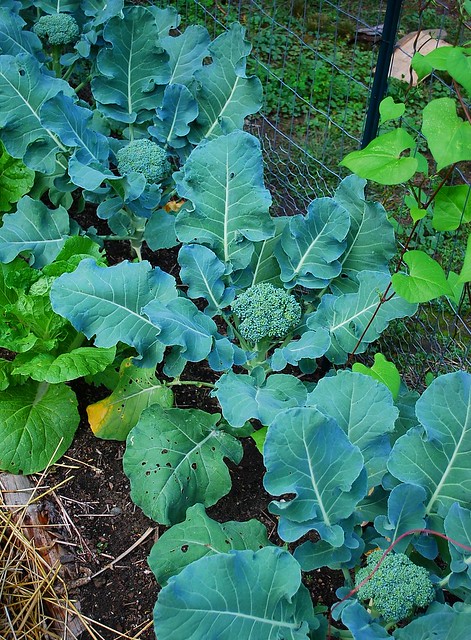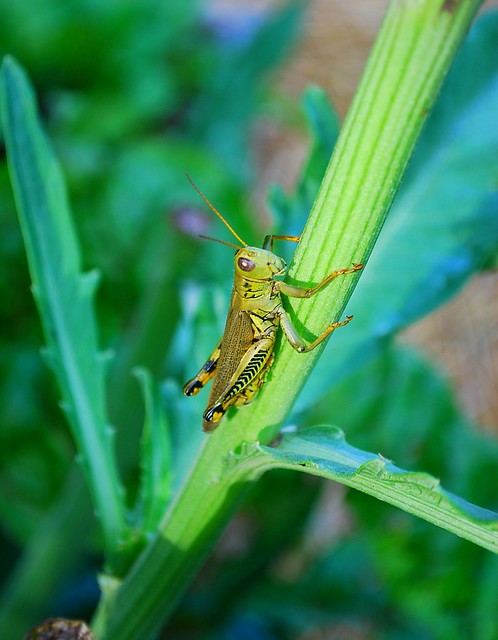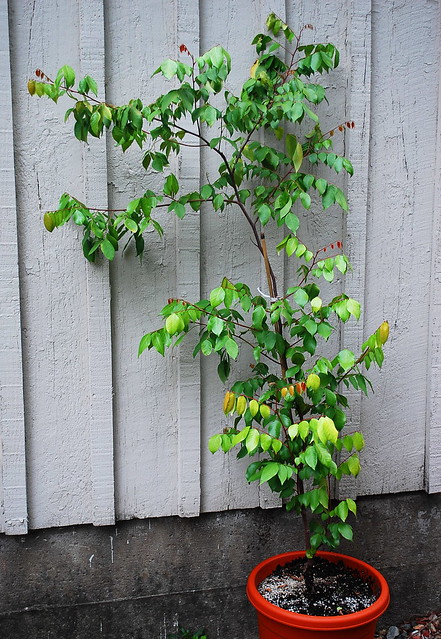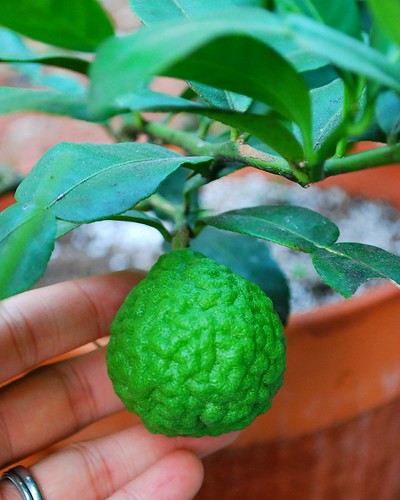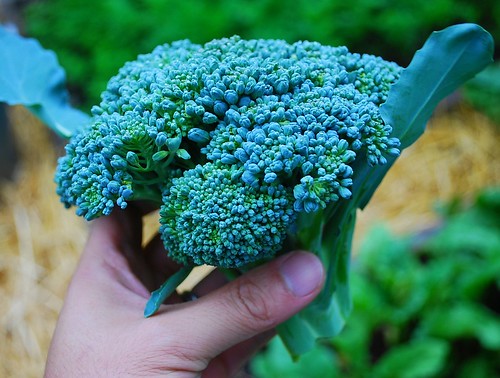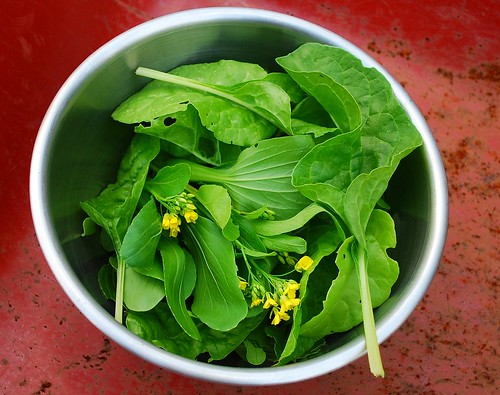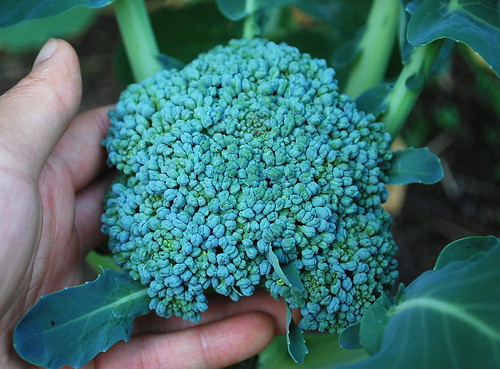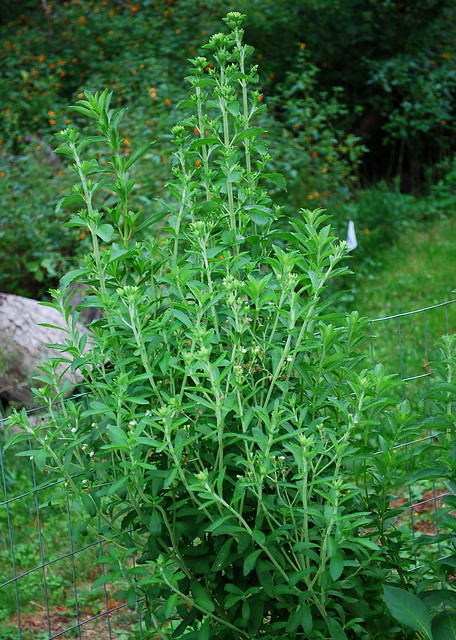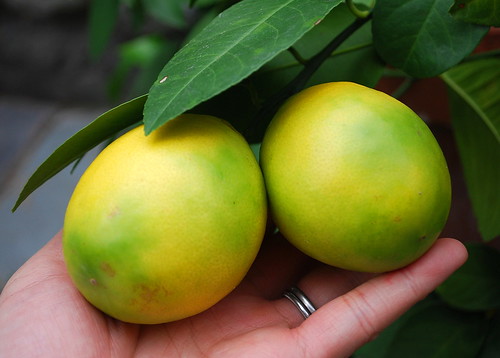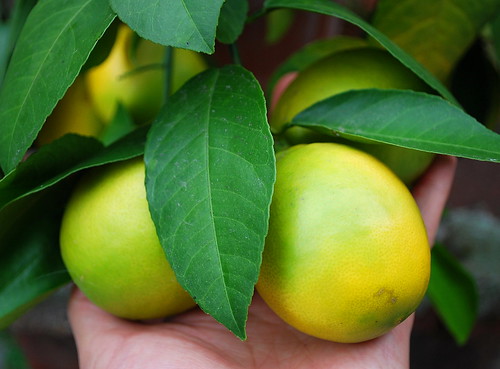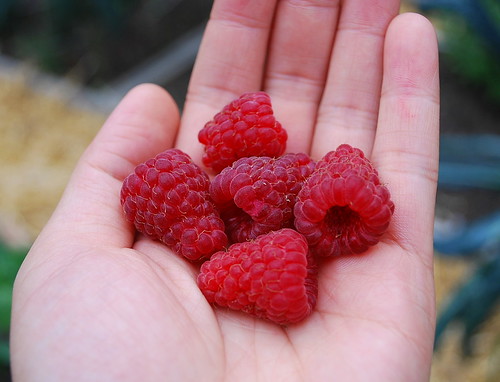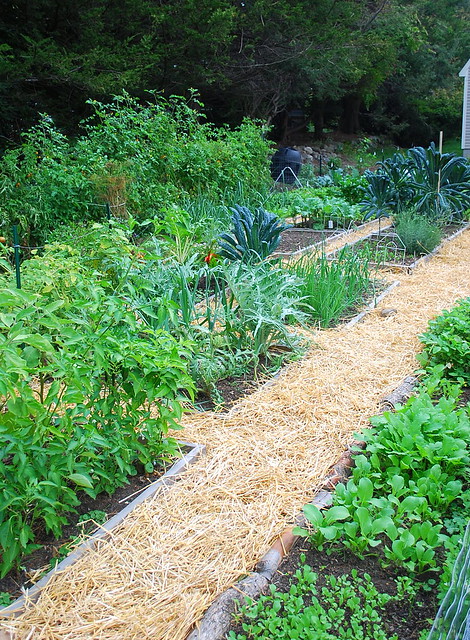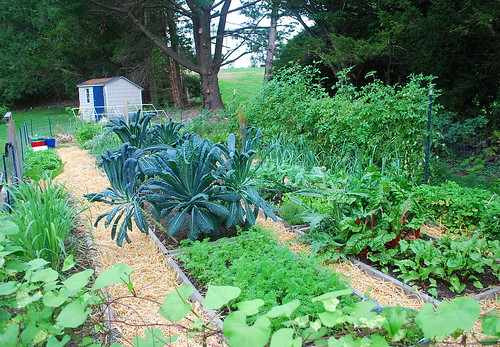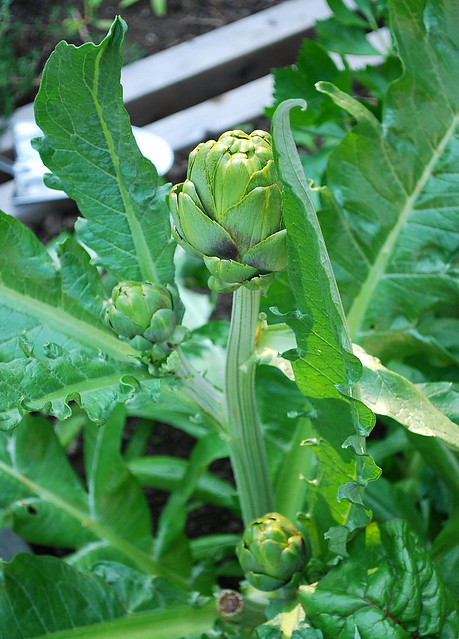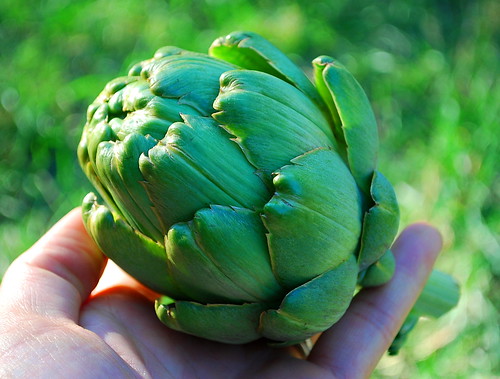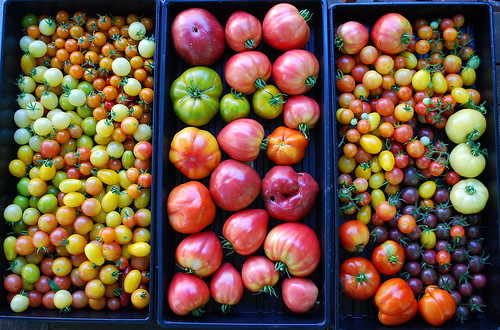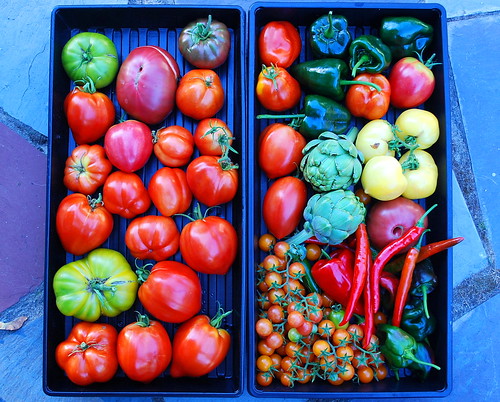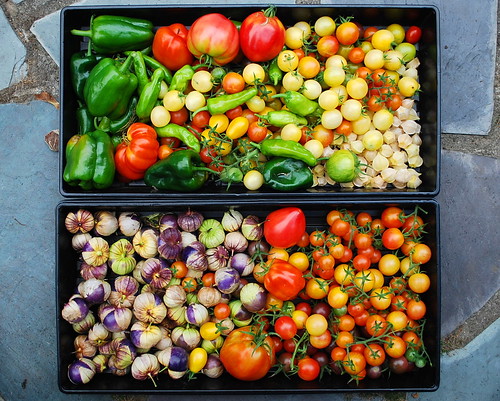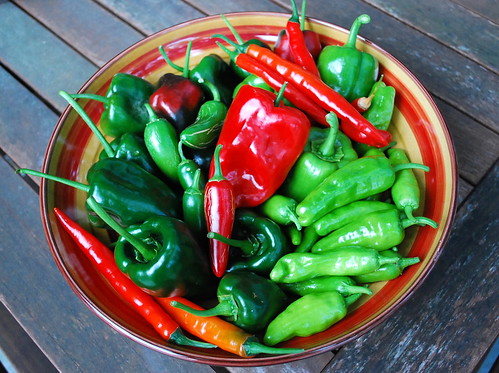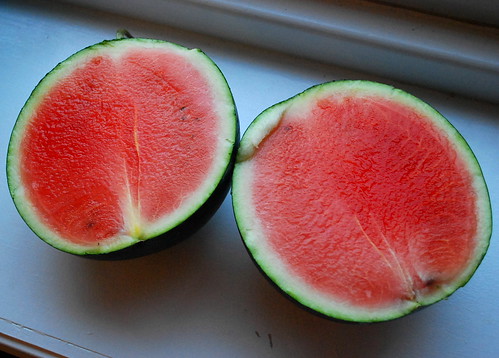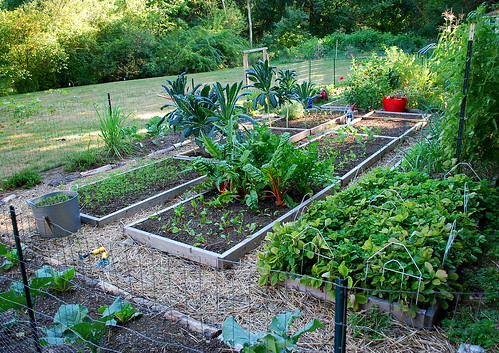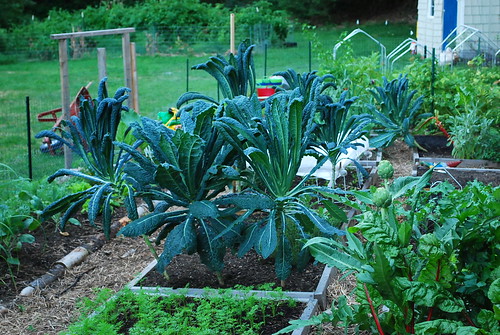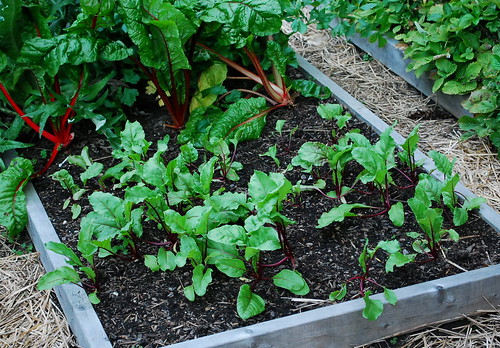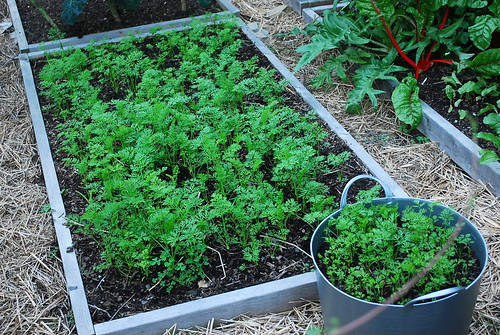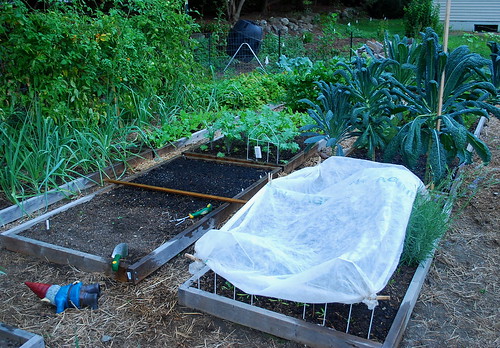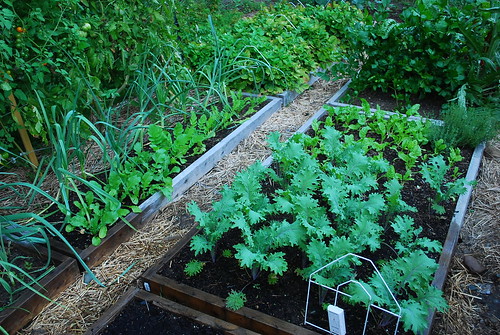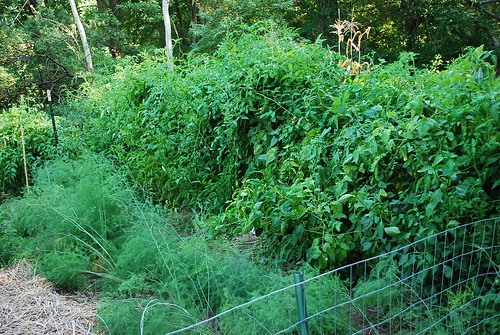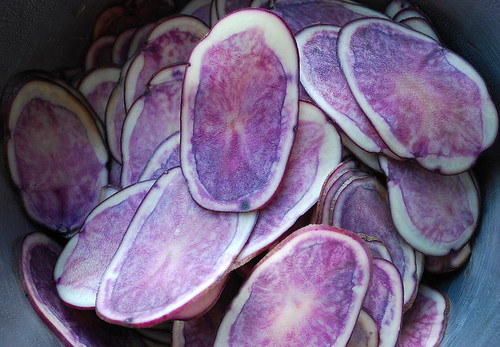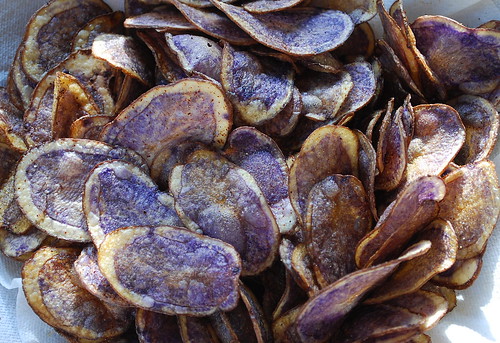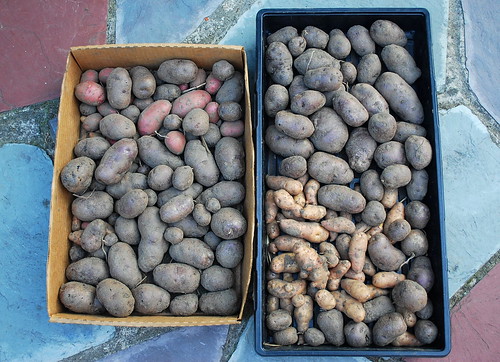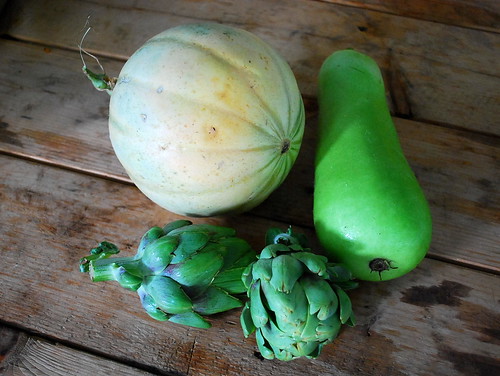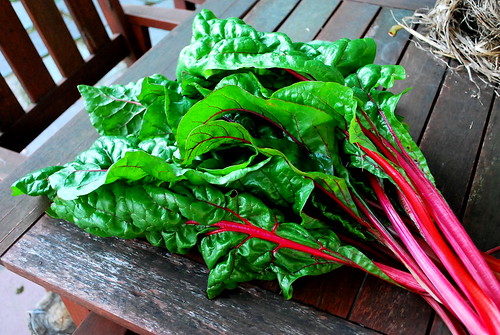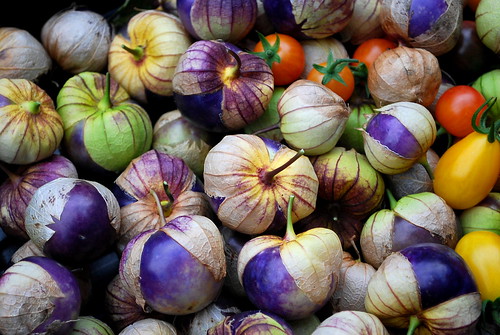
I hate to admit this but I don't think I've ever purchased a tomatillo from the supermarket. And up until recently, I've probably eaten salsa verde only twice in my life. So I can't really explain why I was so interested in growing purple tomatillos this year. I think it came down to the fact that they looked so striking in the seed catalog. In any case, I'm glad I took the leap. A bit late to mature, my two plants ultimately produced an abundant amount of fruit. The longer the tomatillos were left to ripen, the deeper the purple they became.

I decided to try my hand at making purple tomatillo salsa. After googling for a recipe and not being satisfied with any that I found, I ultimately came up with my own. The results were surprisingly good! For future reference and for those who may be interested, the recipe is as follows:
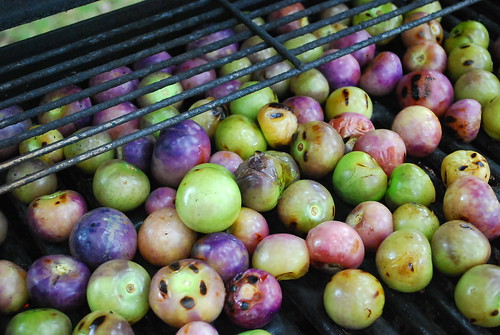
Roasted Purple Tomatillo Salsa2 lb purple tomatillos, husks removed and rinsed
1 rather large onion, peeled and quartered
1/2 lb of mixed peppers/chilies (I used what I had in the garden - poblano, jalapeno and Thai chili)
1 or 2 cloves of garlic, finely minced
Juice and zest of one large lime
1/4 to 1/2 cup of cilantro, chopped (depending on your taste)
1 tablespoon of fresh oregano, chopped
1 teaspoon of sugar
1/4 to 1/2 teaspoon of cumin (of course optional and depending on your taste)
1 teaspoon of kosher salt (or more to taste)
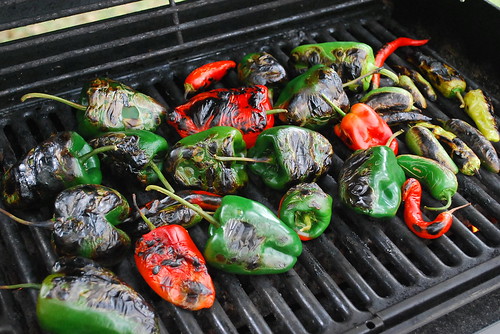
1. Roast the tomatillos and onion on medium heat until they are lightly charred. Then set aside to cool.
2. Roast the peppers/chilies on high heat until they are blackened. (Be careful not to burn the smaller chilies.) Then place them in a bowl and cover with plastic wrap for 10-15 minutes. When cool enough to handle, peel the peppers/chilies. Remove the seeds from the poblanos.
3. Working in batches, pulse all of the ingredients in a food processor until finely chopped. Then pour into a large bowl and stir until thoroughly mixed.

The finished product has a rather interesting color. I love it served with warm tortilla chips or over grilled meats or veggies. It freezes well too. I hope you like it!

